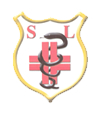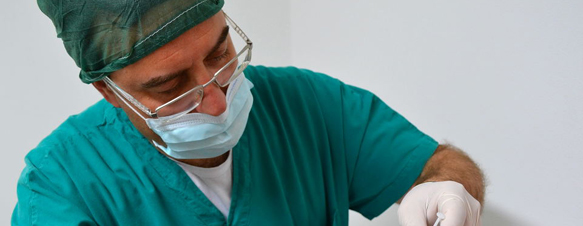Anaesthesiologic examination and anaesthesia
Anaesthesiologic examination and anaesthesia :
– Anaesthesiologic exams reservation, if requie , must be booked by the patient’s doctor or his secretary giving the patient’s name , surname and phone number .
– The examination will be done our by the same anaesthetist who will assist the patient during the surgery.
– If asked , the patient will have to take exam results with him.
After the anaesthesiologic exam our Secretary:
-
Will give the patient a copy of the estimated cost.
-
Will confirm to the patient’s doctor the day and time of the surgery.
-
Will keep the lab exams that will be given to the patient at the and of the treatment.
Procedures for booking and anaesthesia are many :
a ) for allergic , emophiliac , diabetic , cardiopaths ( pazients at risk ) the first examination will be done before the usual clinical exams.
The patient will meet the anaesthetist at our Center and will take with him his documents to be evacuate . Anaesthetist will prescrive the required exams and will evacuate the results in a second visit . When required a cardilogist will be present too.
b ) for disabled people and epileptics an electroencephalogram is required too (even if not recent) we recommend you to came to the anaesthesiologic exam accompanied by a relative.
LOCAL ANAESTHESIA IN ANESTHESIOLOGIC ASSISTANCE
This kind of treatment is adopted for patient considerated “ at risk ” which need to be operated in local anaesthesia but that also should be monitored in a particolar environment .
Patients are considerated “ at risk “ when affected by heart, liver, kidney, lungs diseases, vascular or allergic problems , diabetes and very old people who will be properly pre-treated.
This Center is allowed to treat ASA1 and ASA2 patients after an evaluation of the risk and using this classification :
ASA1 : patient affected by a pathology that is going to be treated in the surgery.
ASA2 : patient with a slightly compromised organ who lives a normal life.
A surgery in anaesthesiologic assistance is often done by dentists when they want to avoid every risk with these kinds of patients ; these will also be conforted by the presence of the anasthetist-reanimator.
SEDO-ANALGESIA OR CONSCIENT SEDATION
This tecnique implies the use of hipnotic drugs and sedative by intravenous injection with analgesic and anti inflammatory drugs (not steroidal ones) : the range might change , as needed. This kind of anaesthesia is generally adopted with patients that are going to have complex implanthology surgeries, oral or maxillofacial surgery , periodontolog or patients affected by hyperreflexia and anxiety .
-
Patients must have been previously visited by the anaesthetist.
-
Few exams are required.
-
Patients will be kept under observation for some hours.
“ Conscient “ sedation consists in giving sedatives and analgesics to patients by intravenous injection following procedures tested in Italy and abroad for more than ten years.
The patient will then be able to have a surgery in a state of partial consciousness that will allow him to cooperate with the surgeon and to leave our center the same day , after a short observation period .Anaesthesia is always given by a specialized doctor .
Psychological preparation before the operation in fundamental for our patients ; they are prepared during the exams evaluation .
After this , a “ pre-anesthesia “ consisting of atropine and benzodiazepines or other minor sedative drugs is given to the patients .
A marginal vein is punched to get some liquids in and now the patients is given hypnotics and analgesics with continuous or discontinuous infusion depending on age, weight and time needed to get the surgery done .Then the surgeon gives to the patients , calm and relaxed but conscious , a local anaesthesia .
Cardiocirculatory and respiratory conditions are constantly cheched by continuous monitoring of ECG , peripherical obsigen saturation rate and arterial pressure by the anaesthetist , in order to be prepared to any emergency .
There are three beneficts with this kind of sedation :
-
the patient is given fewer drugs and can leave on the same day even if not fully conscious during the surgery
-
the patient cooperates with the surgeon , but he has almost no blood at all where the surgery has to be done
-
the operation and degency are way cheaper
Most common surgeries adopting conscious sedation are implanthology and maxillo-facial operations . Oral surgery usually requires only a local anaesthesia .
We expect oral surgeries now adopting general anaesthesia for practical reasons to adopt conscious sedation in a few years , reducing the costs of surgeries and avoiding nocturn decency and many possible risks due to the use of more powerful drugs .















